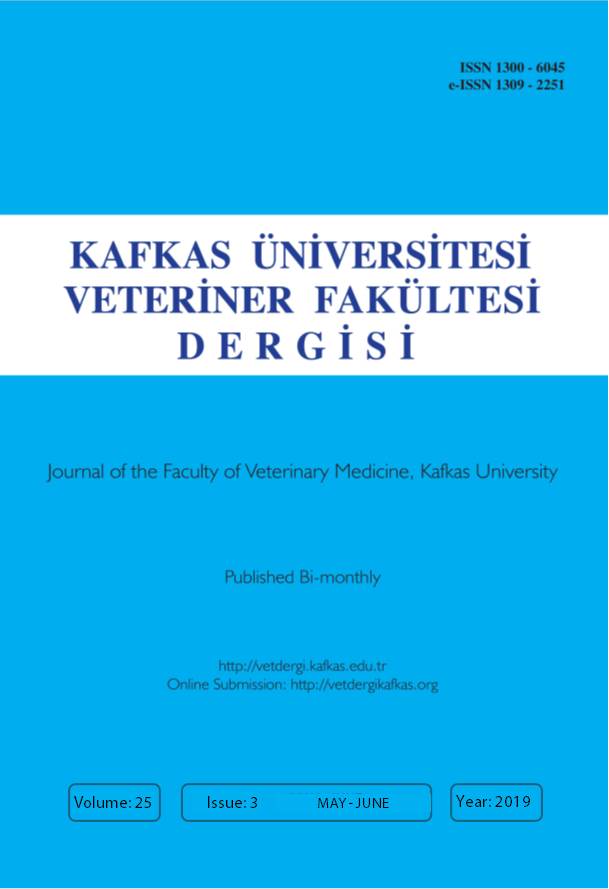
This journal is licensed under a Creative Commons Attribution-NonCommercial 4.0 International License
Kafkas Üniversitesi Veteriner Fakültesi Dergisi
2019 , Vol 25 , Issue 3
Monitoring of Some Anthelmintics Against Gastrointestinal Nematodes in Sheep and Implications of Resistance in Barani Region, Pakistan
1Department of Zoology, University of Poonch Rawalakot, 12350, Azad Kashmir, PA2Department of Biosciences, COMSATS Institute of Information Technology (CIIT), Islamabad, PAKISTAN
3Department of Wildlife and Ecology, University of Veterinary and Animal Sciences, TR-54000 Lahore - PAKISTAN
4Department of Biochemistry, PMAS Arid Agriculture University, TR-46000 Rawalpindi - PAKISTAN
5Department of Zoology, PMAS Arid Agriculture University, TR-46000 Rawalpindi - PAKISTAN
6Department of Parasitology, Faculty of Veterinary Medicine, University of Firat, TR-23119 Elazig - TURKEY DOI : 10.9775/kvfd.2018.21009 The widespread prevalence of gastrointestinal nematode (GIN) infections has an important impact on livestock affecting of meat, milk, traction and manure in tropical and sub-tropical areas. The present study was aimed to monitor the efficacy of commonly available anthelmintic drugs at publicly owned sheep farms. The sheep naturally infected with nematodes were selected, aged between 10 to 18 months, for field efficacy trial. Selected sheep were divided into five groups (15 animals each group) based on their equal egg per gram (EPG) and body weight. Group-I served as control (untreated), while Group-II was treated with albendazole at the recommended rate of 8.8 mL/100 kg of body weight by oral drench, Group-III was treated with levamisole at the rate of 4.4 mL per 100 kg body weight, Group-IV was treated with ivermectin, 200 μg of ivermectin per kilogram of body weight and Group-V was treated with mixture of levamisole and ivermectin at the rate of 10 mg/kg by injecting subcutaneous, respectively. The results revealed that the highest efficacy rate (88.25%) was observed in sheep treated with mixture of levamisole and ivermectin, followed by ivermectin (86.43%), levamisole (81.32%), and albendazole (51.11%), respectively. The data has indicated that nematodes (Haemonchus contortus as the predominant species followed by Trichostrongylus colubriformis, Trichostrongylus axei and Oesophagostomum columbianum) might have developed resistance against the major anthelmintic drugs, encountered throughout this trial. Overall results showed that anthelmintic resistance resulted because non-judicial use anthelmintic drugs without considering the epidemiological knowledge related to occurrence of commonly nematode parasites. Keywords : Anthelmintic efficacy, Gastrointestinal nematodes, resistance, Ivermectin, Levamisole, Albendazole










